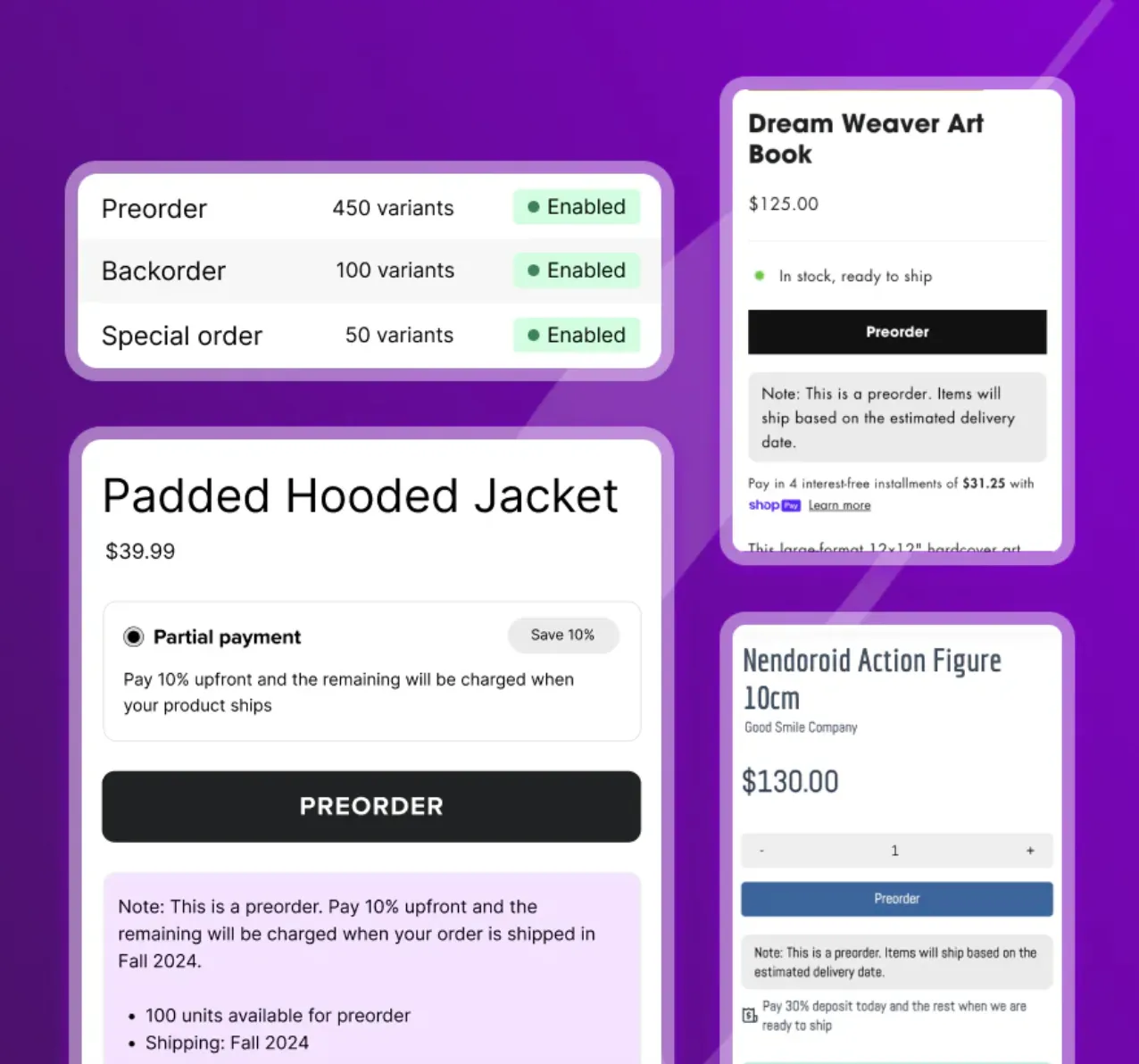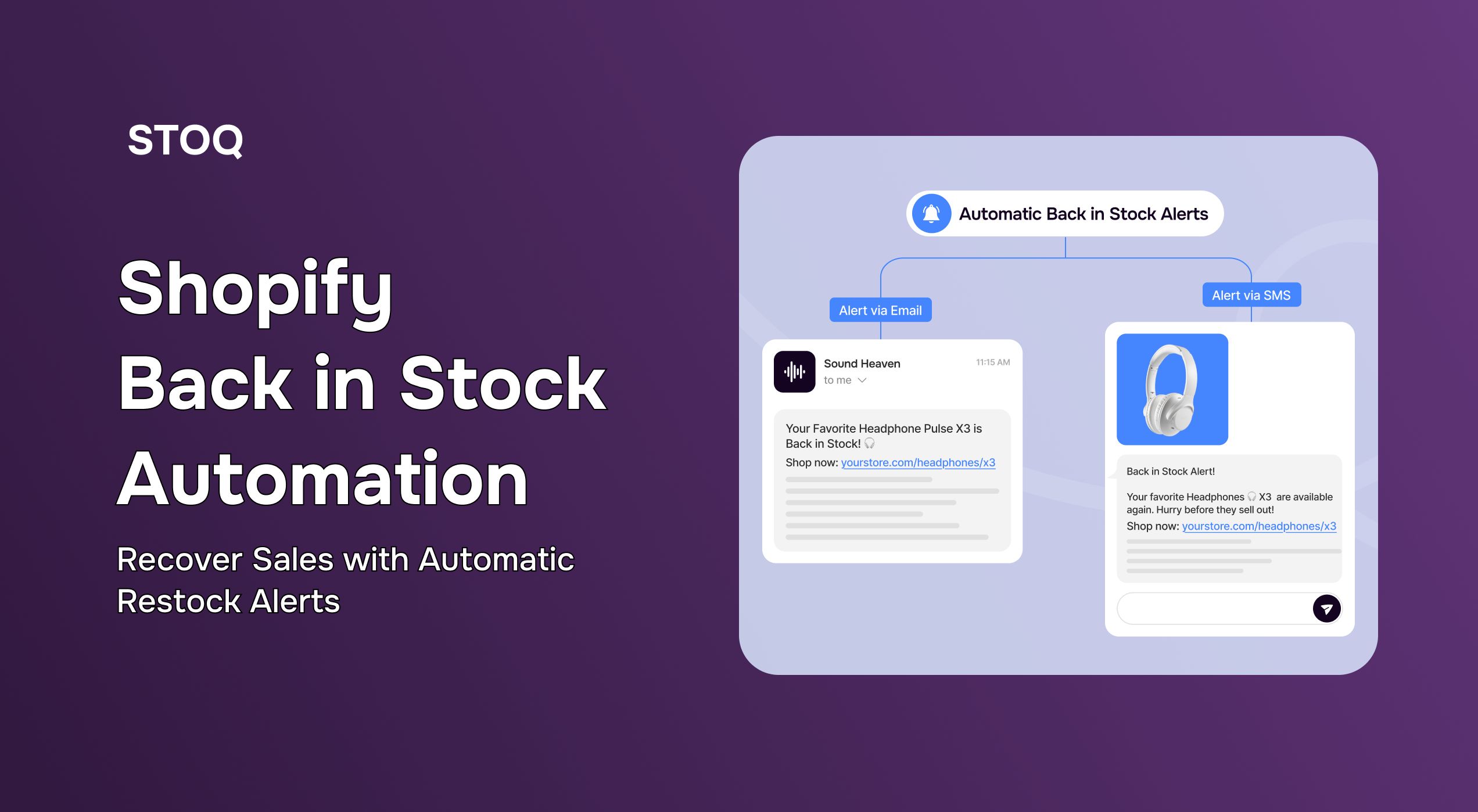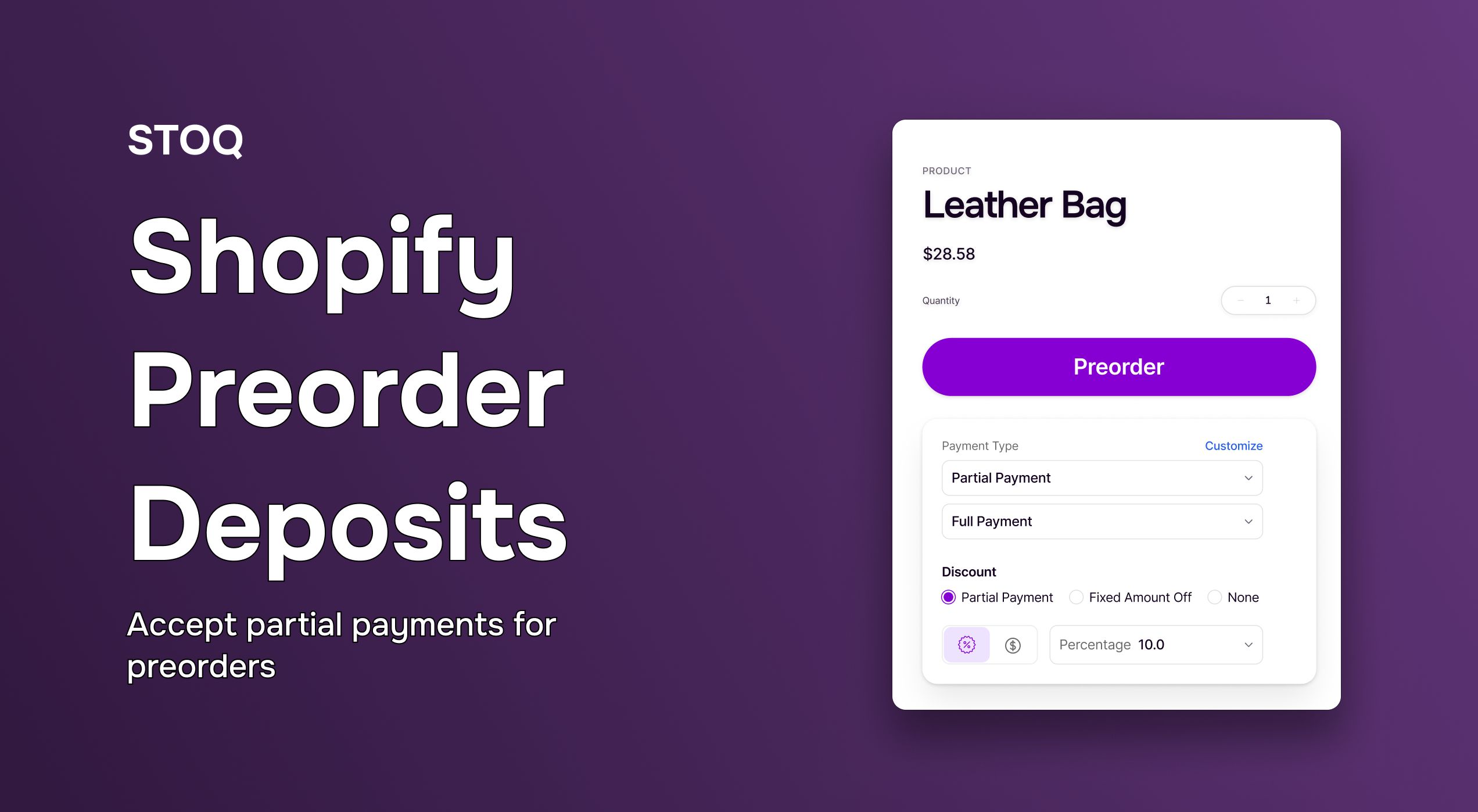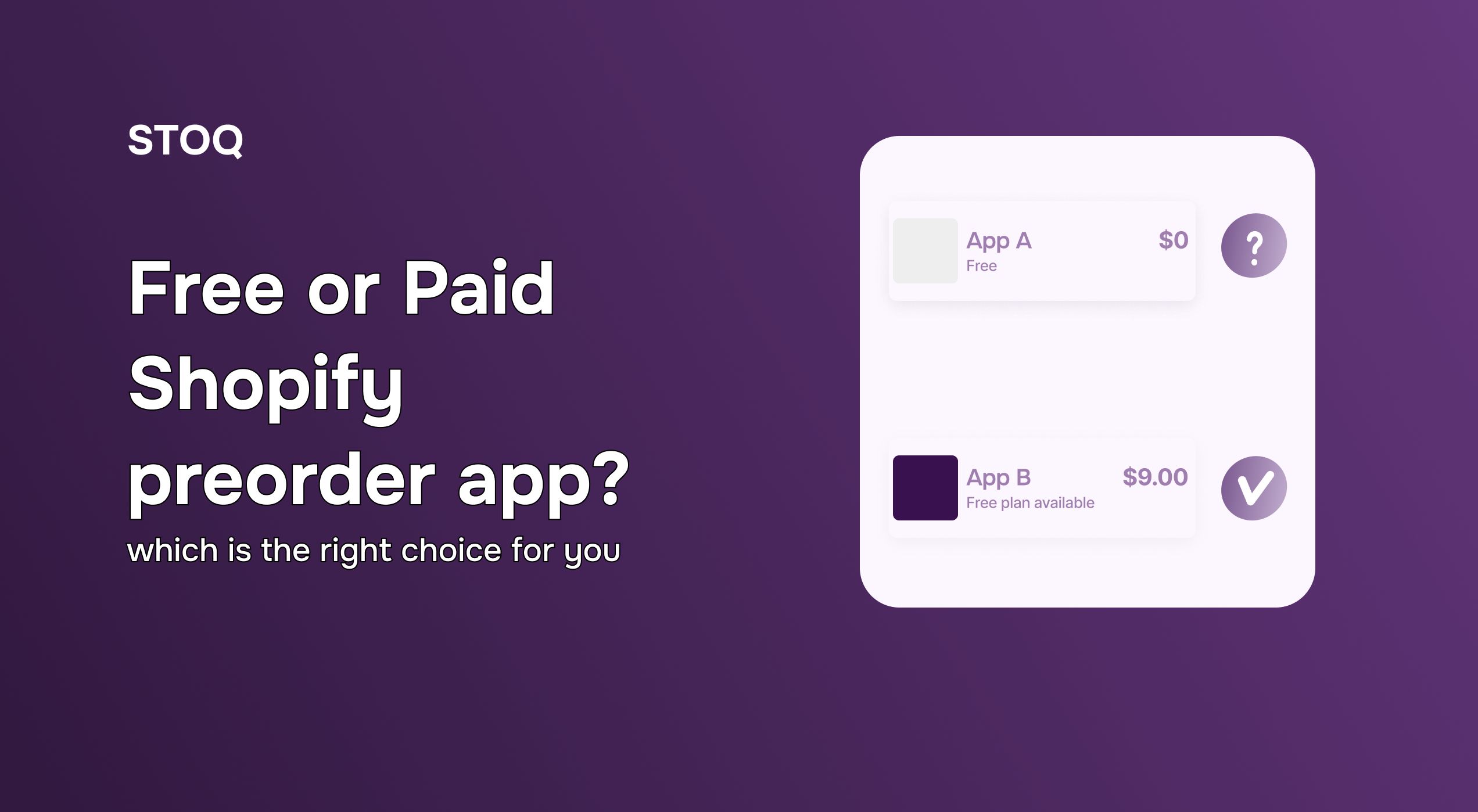Key KPIs to Track for a Successful Preorder Campaign on Your Shopify Store

If you’re setting up preorders on your Shopify store to secure sales and revenue, you need to play the campaign by some numbers. This is where it becomes important to track Shopify KPIs that help understand customer behavior, optimize marketing spend and ensure operational efficiency. If you need help setting up your preorder workflow, refer to our detailed Shopify Preorders guide for a step-by-step walkthrough.
In this post, we’re sharing the key Shopify preorder campaign metrics that have helped brands using STOQ double their sales.

Shopify preorder campaign KPIs and metrics to track
Here are the key numbers you should be closely watching:
Preorder conversion metrics
1. Preorder conversion rate
The percentage of visitors on your website that place a preorder with you. This helps you understand if the preorder page traffic is converting into sales or not. We recommend breaking it down by traffic source, product variant or collection to optimize your marketing budget.
Preorder conversion rate = (Preorders / Total Visitors) × 100
2. Cart abandonment rate
This preorder metric refers to the percentage of online shoppers who added items available on preorder to their cart but left without completing the purchase. High cart abandonment rates may signal friction in the checkout process, unclear preorder terms or inability to highlight the value of the purchase.
Cart abandonment rate = (Abandoned Carts / Total Carts Created) × 100
3. Checkout conversion rate
Track the number of customers that complete their preorder after initiating the checkout process. This helps you identify common drop-off points in the purchase journey to optimize the checkout flow for higher conversions with. The insights can help improve the overall messaging, add preferred payment and shipping options, and more.
Checkout conversion rate = (Completed Preorders / Checkout Sessions) × 100
Traffic and engagement metrics
4. Preorder page traffic
Measure the number of online shoppers that visit your preorder landing page. Analyze the traffic sources - organic, social media, referral, paid, and segment your audience to understand which channel drives better interest and conversion rates.
5. Time on page and bounce rate
Two other Shopify preorder metrics we recommend mapping is how long visitors engage with your landing page offer/ content. It’s also good to measure the percentage of visitors who leave the page without taking any action. A high engagement and low bounce rate indicates that your preorder page content is a value-add to consumers, increasing the chances of conversions.
6. Referral sources
Track where your preorder page traffic is coming from. You want to be able to measure how much organic, social media, email, WhatsApp, ads, influencers and other campaigns are contributing to the success. This helps you identify the most effective channels and double down on them.
Revenue and financial metrics
7. Total preorders revenue
A straightforward metric, the total preorder revenue refers to the value of the sales you drive from the campaign. This helps you with cash flow projections and better inventory planning over time.
8. Average order value (AOV)
While you might set preorders on specific products or collections, it is also a good idea to map your AOV. A higher AOV lets you reinvest budgets in marketing the preorder campaign. This can be increased by creating product bundles, tiered pricing or upsells. Monitoring your average order value (AOV) alongside preorder revenue can help you reinvest more effectively into promotions.
AOV = Total revenue/ Total preorders
9. Customer acquisition cost (CAC)
The cost you incur to acquire customers reveals the effectiveness of your marketing channels. This helps optimize your budget allocation based on which channels are good for driving traffic, and which ones are actually generating sales.
CAC = Total marketing spend/ Number of new preorder customers
Marketing performance metrics
10. Open and click rates
Measure the effectiveness of your communication channels like SMS, email, web push notifications, app push notifications and WhatsApp. A high open and click through rate indicates stronger interest from your target audience, leading to higher engagement and conversions.
11. Social media engagement and clicks
Track likes, shares, comments, saves, direct messages and clicks to your preorder landing pages. This helps see how interested your target audience is in placing preorders, and also helps drive more social proof along with organic visibility.
12. Influencer and affiliate performance
If you’re working with creators to promote the preorder campaign, assess how effective they are at reaching your ideal customer persona. You can do this by tracking the unique links or coupon codes created for them. This also helps identify your best partners to scale the campaign.
Operational and fulfillment
13. Preorder cancellation rate
Don’t stop at conversions. Look into how many customers are cancelling their preorders; a high number may indicate issues with wait times or communication. When too high, you may have to set up retargeting and re-engagement campaigns before the secured revenue slips.
14. Shipping time and fulfillment rate
Track the percentage of preorders fulfilled on schedule. If the preorders are reaching your customers at the estimated delivery dates, it builds trust and supports future campaigns. This also helps identify shipping partners you can work more aggressively with.
How to use Shopify preorder KPIs
Don’t just track data. Here’s how our success managers recommend using the numbers to improve your preorder campaigns:
- Optimize marketing spends - Identify channels that are best suited for different stages in the buying journey (TOFU, MOFU and BOFU). The goal is to double down on the channels that drive both traffic and conversions, while keeping the CAC low.
- Improve your messaging - Use page analytics to adjust your campaign messaging. This includes your product descriptions, incentives and offers, and the value proposition of placing a preorder.
- Reduce friction - Identify common drop-off points to optimize the checkout process. From checkout fields, payment and shipping options to coupon codes and more, optimize to give lesser time to shoppers to rethink the purchase.
- Optimize inventory - Use demand data and consumer behavior to optimize the availability of your products. This can help you save on overstocking costs and prevent missed opportunities due to under-stocking.
- Combine preorders with back-in-stock alerts to capture interest when your initial allocation sells out.
Best tools to track Shopify preorder KPIs and metrics
Now monitoring these numbers manually is impossible. Here’s how we recommend keeping track:
- STOQ Preorders - Use a Shopify app like STOQ to set up your preorder campaigns. It lets you not just create custom campaigns for products, collections or variants, but also monitor their performance closely.
- Shopify Analytics - The eCommerce platform provides basic tracking of traffic and sales from your preorder campaign.
- Google Analytics - For deeper insights into consumer behavior, you can also use Google Analytics to see how they engage with the preorder page and the rest of your website.
- Hotjar - For visualizing user interactions and where they pay the most attention, use Hotjar analytics. This helps you tailor the look and feel of your page for maximum conversions.
Conclusion
Preorder campaigns are a powerful strategy but only when it’s backed by consumer demand and behavioral insights. This is where using Shopify apps like STOQ comes into play - it equips you with everything you need to set up the campaign, run it on auto and optimize it continually with insights.
Frequently asked questions
Can you do pre-orders through Shopify?
Shopify can support preorders on the online store and custom storefront sales channels. But customers cannot combine different purchase options on the same product in a single checkout. For more customizations, you will need a Shopify app like STOQ for the preorder campaign.
Which PreOrder app is best for Shopify?
The best pre-order app comes with the ability to set up custom campaigns on product, variant and even collection level. One of the most commonly used and reviewed Shopify preorder apps is STOQ.
How do preorders work?
A pre-order strategy allows customers to place an order for an item that isn’t released yet. In most cases, retailers charge the customers when the order is placed to confirm the demand; but in some cases, they charge when the item is shipped to the customer.



